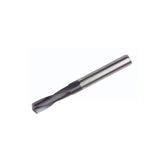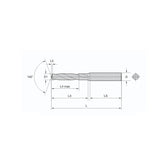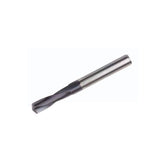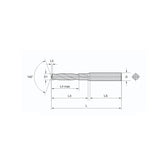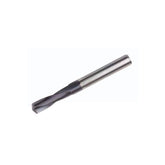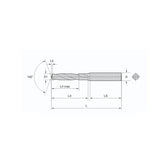Gauge Block, Have You Chosen the Right One? - Mitutoyo
Have You Chosen the Right Gauge Blocks?
In the field of precision manufacturing and quality inspection, gauge blocks, as one of the length standards, play an irreplaceable role. They define length standards through the specific distance between two precision-processed parallel planes and are widely used in the calibration of various measuring instruments and tools.
But...
Have you ever evaluated whether the gauge blocks in your hand are the optimal choice for your required scenarios?
Diverse Selection of Gauge Blocks
Gauge blocks can be categorized into various types based on material, shape, accuracy grade, and combination method, with different applications corresponding to different accuracy and material requirements. It is essential to avoid cost waste caused by insufficient or excessive accuracy.
Classification by Material
-
Steel Gauge Blocks (Chromium Manganese Steel):
Characteristics: High hardness, good wear resistance, strong dimensional stability. Suitable for dry industrial environments such as mechanical processing and mold manufacturing.
Disadvantage: Prone to rust due to steel material, requiring attention to dry usage environment and regular application of anti-rust oil for maintenance. -
Ceramic Gauge Blocks:
Characteristics: Harder than chromium manganese steel, wear resistance is 10 times that of steel blocks, excellent thermal stability (almost no thermal expansion or contraction), corrosion resistance, non-magnetic.
Ideal for use in humid or highly corrosive environments.
However, disadvantages include brittleness and susceptibility to breakage, relatively higher cost compared to steel, and require careful handling by users.
Preferred for applications requiring superior wear resistance, corrosion resistance, lightweight, and high stability.

-
Carbide Gauge Blocks:
Suitable for high-frequency usage scenarios due to extremely high impact resistance and wear resistance.
However, due to high cost and heavy weight, they are often considered less cost-effective. But you might not know their alternative name: "Protective Blocks for Steel and Ceramic Gauge Blocks" –
Carbide gauge blocks, with their ultra-high wear resistance and hardness, are typically used as protective blocks. When combined with steel or ceramic gauge blocks, they protect the main gauge block end faces from wear, effectively extending the service life of the entire set.
Classification by Accuracy Grade
Accuracy grade is a core indicator of gauge blocks. Gauge blocks are typically divided into grades K, 0, 1, 2, and 3. The smaller the grade number, the higher the accuracy, but the higher the cost. Before selection, choose the appropriate grade based on the application to avoid blindly pursuing high accuracy, which can significantly reduce costs for enterprises.
-
Grade K: Reference Use
Grade K gauge blocks are generally used in temperature-controlled inspection rooms or calibration laboratories. They are primarily used as calibration standards to calibrate other gauge blocks through comparison. -
Grade 0: Calibration Use
These high-precision gauge blocks are used in controlled environments to adjust high-precision measuring equipment and calibrate lower-grade gauge blocks as reference standards. -
Grade 1: Inspection Use
Used for inspecting plug gauges and snap gauges or adjusting electronic measuring devices. -
Grade 2: Workshop Use
Used for adjusting or verifying fixtures or precision instruments.
Note: Grade codes and tolerance regulations vary across different national standards. Please confirm the corresponding standards when purchasing.
Classification by Shape
Gauge blocks can be broadly divided into rectangular gauge blocks and square gauge blocks (custom special shapes and sizes are also available).

- Rectangular Gauge Blocks: Rectangular gauge blocks are the most common shape, with a standard width of 9mm, derived from the design of the combination gauge block inventor, Johansson. The fixed width facilitates users in combining them into various lengths, and this scientific design has been used to this day.
-
Square Gauge Blocks: Square gauge blocks originated from the improvement by American Hoke, featuring a center hole design, creating a cylindrical gauge block set of 50 sets and 81 blocks. During use, a pull rod can be passed through multiple gauge blocks and locked with nuts, suitable for simply creating height references and dedicated inspection fixtures.


Customization: With the rapid development of manufacturing technology, when standard gauge blocks cannot meet new measurement requirements, you can contact Mitutoyo for custom gauge block services, producing according to your specified dimensions and special shapes.

Classification by Combination Method
-
Gauge Block Sets:
If you need to measure or calibrate multiple dimensions, you can achieve the required dimensions by combining gauge blocks. When selecting a set, you may be confused by the various size and accuracy combinations. Adhering to the principle of "minimum number of combination blocks," choose a set that covers the most commonly used dimensions with the fewest blocks. -
Single Gauge Blocks:
If your need is to frequently use a fixed dimension, purchasing a single gauge block is the most economical choice.
Finally, sharing a few tips, hoping they are helpful to you. We also look forward to your corrections and additions to the above content, so we can work together to contribute to the measurement industry.
Gauge Block Selection Tips
When selecting gauge blocks, in addition to considering the scenarios corresponding to the gauge block classifications, the following points should also be considered.
- Select based on measurement range: Choose a set according to the required measurement range. For larger measurement ranges, one or multiple long gauge block sets can be selected.
- Consider operational convenience: 2mm reference gauge blocks are easier to handle than 1mm gauge blocks. Select the appropriate minimum step difference based on actual needs.
- Consider protection and durability: If the workpiece material is prone to wear, add protective gauge blocks at both ends of the gauge blocks to effectively extend service life. Protective gauge blocks support repeated use, making them economical and practical.
- Utilize dedicated solutions: Mitutoyo provides gauge block sets specifically for micrometer and caliper inspection, ensuring optimal compatibility and accuracy.
Gauge Block Wringing Tips
The wringing property of gauge blocks refers to the ability of one measuring face of a gauge block to adhere to another gauge block's measuring face or to another finely processed surface similar to a gauge block's measuring face through molecular force interaction. — "JJG 146-2011 Gauge Blocks".
This stems from extremely high processing precision.
Mitutoyo, with its accumulated exquisite lapping technology, ensures that the produced gauge blocks have excellent flatness and surface roughness, thus achieving superior wringing. Here are the gauge block wringing tips: 5 preparation steps, 3 major methods, 4 types of poor wringing causes, hoping to help you master the gauge block wringing method and achieve efficient and accurate measurement.
By mastering the correct classification, selection methods, and usage methods of gauge blocks, the performance of gauge blocks can be fully utilized, guarding precision measurement from the laboratory to the production workshop.
